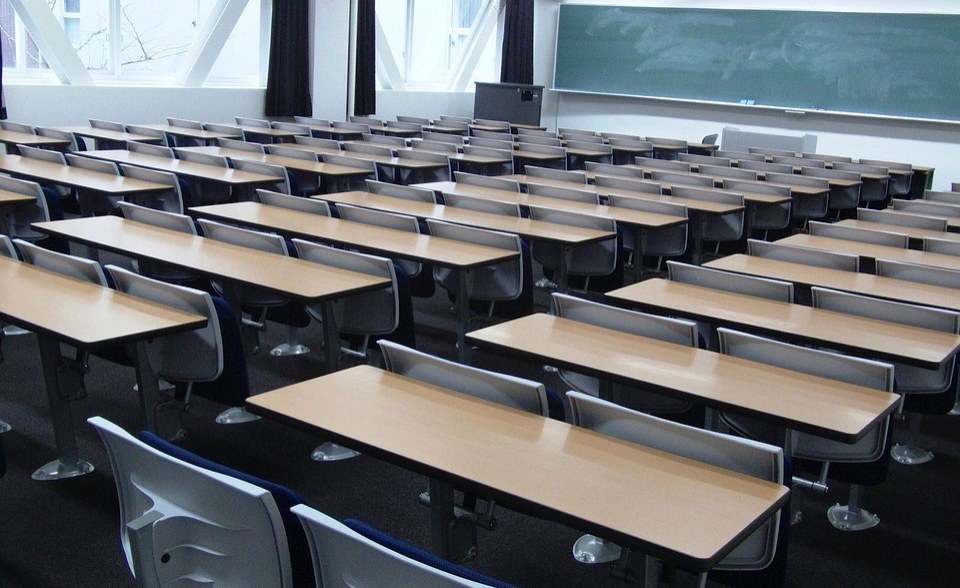Since the onset of the pandemic, many colleges and universities have reported record numbers of applications from mature students – adults who return to school on a part- or full-time basis while maintaining responsibilities like employment, family and other adult life responsibilities.
Both students and post-secondary leaders cite the chance to attend school remotely or to rethink one’s career in the pandemic as reasons for this trend.
Yet, it’s unclear which adults, exactly, are going back to school, and what demographics they represent, or how the pandemic affected enrolment overall. For example, The Guardian reported that Australian universities saw a decrease in student enrolment that was “highly gendered, with the number of female students dropping by 86,000, compared with male students dropping by 21,200.”
My research examines the changes mature women students face when deciding to return to higher learning study, and what institutions might do to support their success. Universities can do more to address barriers that mature women students face when accessing higher education – and indeed, all non-traditional students, meaning any student demographic that has previously been under-represented in universities.
Gaining independence
One study of employed middle-class men and women in dual-earner couples found that when returning to school in midlife, men mostly indicate a desire for personal growth or career advancement. Women, meanwhile, are more likely to be motivated by their relationships and life events.
These differences are important because they speak to some barriers women face — such as the need to have lessened family responsibilities or additional supports. These responsibilities and the resources mature students have to manage them are affected by a variety of factors like class background or disability.
Encouraging women to return to school can have important personal benefits like fostering a sense of empowerment and gaining independence from traditional family structures. Research has shown that higher education has the power to transform women’s identities and views of the world.
Barriers to returning to school
Research has identified three main types of barriers mature women students face when returning to school:
1) Situational barriers refer to the conflicts women experience when juggling multiple roles like full-time paid work, child care and care-giving responsibilities. For example, when mature students who are mothers return to school, they often encounter societal stigmas and questioning of their characters as “good mothers.”
When adult students pursue higher education, they may encounter a university culture dominated by younger students and find that their own ways of participating in the academic environment are stigmatized. Gendered ageism also occurs, for example, when women are thought to be beyond the expected age for their academic progression. Mature students may face gendered discrimination due to (perceived) declining “attractiveness” and social value with age. BIPOC mature students in universities face intersectional forms of discrimination: they also contend with systemic racism.
2) Institutional barriers: As research by education scholar Xi Lin notes, challenges may come from family, peers, people in the school community and university structures: situational barriers overlap with institutional barriers, if we understand both family and universities as social institutions.
For example, mature students can face gendered discrimination in interpersonal interactions; they can encounter racialized discrimination when curricula is exclusive and does not reflect the knowledge or lives of BIPOC people. Institutional barriers could also refer to a lack of accommodations for mature students with disabilities.
Many universities are not adapted to the needs of learners who are balancing many roles and commitments. This relates to program design or student or campus services that run only in “normal” business hours. Yet research has shown that when the logistics of academic programs change to address the needs of mature students, their outcomes can improve. One example would be extending the time students can take to finish their program or adapting a program’s timetable around the hours of children’s schools.
3) Dispositional barriers are individual characteristics, including fear of failure, attitude toward intellectual activity and perceptions about the ability to succeed. Institutional and situational barriers can create a context where mature students question whether or not they belong at university because they do not “look” the part of a student.
Addressing barriers
I propose three main ways to better support mature students in higher education:
1) Address stigma of being older in higher education: As a society, we must address gendered ageism, in addition to racism and all forms of exclusion, in universities. Gendered ageism is a form of exclusion that remains unexplored. Universities must expand their diversity, equity and inclusion initiatives to include ageism as a form of discrimination that will not be tolerated.
2) Present opportunities to participate in campus communities for mature students in all their diversity: To address the feeling that they do not belong in a university setting, mature students need spaces where they can create a sense of community. This can be achieved by creating networks or centres aimed at building connections among mature students, in dialogue with existing campus networks concerned with addressing barriers and student inclusion for marginalized students. These spaces can be created online to support mature students’ packed schedules.
3) Adapt program logistics to the reality of students’ multiple roles: The pandemic is an opportunity for universities to rethink how they offer student services and organize course timetables to create inclusive campuses. Student support services like academic advising could be offered in the evening to accommodate working students. Universities could also explore offering low-cost, on-campus childcare in the evenings or on weekends to assist student parents. Term beginning and end dates could be chosen to align with elementary and high-school schedules. Efforts must be made to make school work for non-traditional students, and this begins by helping students fit the various pieces of their lives together.
Mature women – and all mature students – often bring years of experience and fresh perspective in the classroom. It’s time for university classrooms to be more accessible for the benefit of all students.
Heather Sorella, PhD Candidate, Educational Studies, Concordia University
Source link


